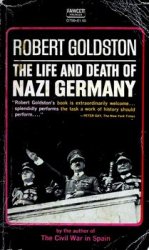Three epic chronicles and an extensive corpus of troubadour lyrics in Occitan, the Romance language of medieval southern France (also known as Provencal or lange d’oc), refer to crusades to the East, the reconquest in Iberia, and the Albigensian Crusade (1209-1229).
Epic Chronicles
According to the Limousin chronicler Geoffrey of Vigeois, a knight named Gregory Bechada wrote a massive volume over a period of twelve years, commissioned by a local bishop and produced with advice from one Gaubert the Norman, narrating events of the First Crusade (1096-1099). To make himself understood by the populace he wrote in the vernacular, using popular meter. Although it could have been commissioned at any time between 1106 and 1137, it seems most likely to have been prompted by a recruitment drive by Prince Bohemund I of Antioch in 1106 to drum up support for the crusades.
Bechada’s text partially survives in a manuscript fragment (MS. Madrid, Biblioteca de la Real Academia de la Historia, 117): this is a late twelfth-century reworking of Bechada’s original, preserving many of its features. The fragment describes the battle of Antioch, highlighting the role of Occitan knights, particularly Bechada’s patron Gouffier of Lastours, as well as southern Norman knights, especially Bohemund. Forming part of what was known as the Canso d’Antioca, it contains some eyewitness testimony, and represents an independent if limited source. Bechada’s vernacular composition is the earliest history writing in Occitan and arguably also predates all such writing in French.
The largely pro-crusade author Guilhem de Tudela modeled the first part of his song of the Albigensian Crusade, the Chanson de la Croisade albigeoise (1210-1213), on a version of the Canso d’Antioca, appropriating his predecessor’s authority and implying that the Albigensian Crusade had the same kind of justification as the First Crusade. The anonymous and vehemently pro-Southern continua-tor of the song (1218-1219) retains the same form, though his ultra-pure Occitan language, in contrast to Guilhem’s admixture of gallicisms, is a political statement as much as a sign of his Toulousain origins. Sidestepping the problem of heresy, he represents the war in terms of a conflict of paratge (a blend of the lord’s natural right of inheritance with a principle of parity and social inclusion) and God on one side, and Evil and the papal army on the other.
Troubadour Lyric
Several lyric troubadours, such as Duke William IX of Aquitaine, Jaulfe Rudel, Peire Vidal, Gaucelm Faidit, Giraut de Borneil, and Raimbaut de Vaqueiras, experienced crusades to Outremer or Spain at first hand. Lyric themes concerning crusades overseas or in Spain include exhortations to follow the example of dynastic or legendary forebears and support, out of duty to one’s supreme overlord, and to avenge God’s suffering and recover the dishonorable loss of Christ’s patrimony, in particular the holy places. Trou-
Occitan Literature
Badours excoriate the hated enemies of Christendom, criticise and lament the failures or vacillations of Western rulers and the cowardice and manifold excuses of those who stay behind (not without coming up with some themselves), and praise those who abandon material interests to go or who go for spiritual reasons rather than plunder. They respond to many specific events, such as the disasters of Hattin (1187) or Alarcos (1195), the Treaty of Gisors (1188), the conquest of Constantinople (1204), and the victory of Las Navas de Tolosa (1212). They see crusade as pilgrimage, and as a test of valor. They express the pain of separation from a lover, whether in the West or the Holy Land, and the fear of various dangers: a lover’s disloyalty, the sea crossing, invasions from the East, the coming of Antichrist. Love and crusade are often intertwined, and Giraut de Borneil defends the compatibility of the crusades and the courtly way of life. Irreverent and burlesque treatment of the crusades is not uncommon.
No Occitan lyrics survive from the period of the First Crusade, though the chronicler Orderic Vitalis reports that William IX of Aquitaine regaled his audience with comic songs about his crusading exploits in 1101-1102. Jaufre Rudel and Cercamon promoted the Second Crusade (1147-1149), whereas Marcabru criticized Jaufre Rudel as being enslaved by sexual desire while taking the cross, admonished the French crusaders about love and particularly women who loved more than one man (perhaps an oblique reference to gossip about Eleanor of Aquitaine), and after the crusade’s failure at Damascus in 1148, extolled the reconquest in Iberia as a preferable source of spiritual purification. Between these crusades, Peire Bremon lo Tort was associated with William Longsword, marquis of Montferrat, who died at Ascalon in July 1177.
Troubadours of the Third Crusade (1189-1192), dismayed at the loss of the holy places, and frustrated by delays in a Western response, include Bertran de Born, Peire Vidal, Giraut de Borneil, Gaucelm Faidit, Peirol, and Folquet de Marselha. King Richard the Lionheart is a hero, though not for all of them. An anonymous troubadour promotes the Fourth Crusade (1202-1204), concerned at the loss of the Holy Land, from Tyre to Egypt [Zenker, Peire d’ Auvergne, p. 798]. Peire Vidal, Gaucelm Faidit, and above all Raimbaut de Vaqueiras center their attention on Boniface of Montferrat, whose court in Constantinople became a center of literary activity also involving Elias Cairel, a lady Isabella, and the French poet and diplomat Conon de Bethune. From 1207 to 1215, Elias Cairel, Aimeric de Peguilhan, Pons de Capduoill, and Guilhem Figueira maintained awareness of the crusades to the East. Troubadours of the Fifth Crusade (1217-1221) include Elias Cairel, Tomier, Palaizi, Peirol, and Peire Car-denal.
Falquet de Romans, Guilhem Figueira, and Peire Carde-nal comment on the Crusade of Emperor Frederick II in 1228-1229, while subsequently Bertran d’Alamanon, Peire Bremon Ricas Novas, Duran Sartor de Paernas, and others express the need for further crusading efforts. The period spanning Saint Louis’s two crusades (1248-1267) incited interventions by troubadours such as Lanfranc Cigala, Bertran d’Alamanon, Austorc d’Aorlhac, Bernart de Rovenac, and many others. The Iberian reconquest inspired vehement responses from troubadours such as Marcabru, Peire d’Alvernha, Gavaudan, Guiraut Riquier, and Matieu de Caerci.
Numerous troubadours express passionate responses to the Albigensian Crusade. Raimon Escrivan composed an imaginary, exultant tenso (debate song) between two siege engines, evoking the siege of Toulouse in 1218: Simon of Montfort’s engine, a so-called cat, had approached the city walls and was repulsed by the Toulousains, when women wielding a trebuchet fired the rock that dealt Simon his deathblow. Guilhem Figueira inveighs at length against “treacherous Rome,” the pope, and all the false, cupidinous clergy who have sanctioned the murderous northern invasion. Guilhem Montanhagol censures hypocritical clerics who clamp down on the Occitan way of life and exploit opportunities for extortion, while Peire Cardenal declares that inquisitorial clerics are worse than kites and vultures in scenting the rotting flesh of wealth to be scavenged from the innocent. After the Treaty of Paris in 1230, which led to the annexation of much of the south to the French Crown, Bernart Sicart de Marvejols laments the power of the French occupiers, whom the southerners had to address humbly as “Sire,” receiving merciful treatment only as long as they give them generous supplies: “Ah, Toulouse and Provence and the land of Agensa, Beziers and Carcassonne, how I used to see you, and how I see you now!” [Riquer, Los Trovadores, 3:1203-1206]. And in a last flicker of revolt, during the uprising of 1242 Bernart de Rovenac seeks to rouse resistance by reviling the flabby English and Aragonese kings who fail to come to the aid of the south or to defend their own territorial rights.
-Linda M. Paterson
See also: Albigensian Crusade (1209-1229); France
Bibliography
Aurell, Martin, La vielle et I’epee: Troubadours etpolitique en Provence au Xllle siecle (Paris: Montaigne, 1989).
Ghil, Eliza M., L’Age de Parage: Essaisur lepoetique et le politique en Occitanie au Xllle siecle (Frankfurt am Main: Lang, 1989).
Lewent, Kurt, “Das altprovenzalische Kreuzlied,” Romanische Forschungen 21 (1905), 321-448.
Paterson, Linda, “Occitan Literature and the Holy Land,” in The World of Eleanor of Aquitaine: Literature and Society in Southern France between the Eleventh and Thirteenth Centuries, ed. Marcus Bull and Catherine Leglu (Woodbridge, UK: Boydell, 2005), pp. 83-99.
Riquer, Martin de, Los Trovadores: Historia literariay textos, 3 vols. (Barcelona: Planeta, 1975).
Siberry, Elizabeth, Criticism of Crusading, 1095-1274 (Oxford: Clarendon, 1985).
-, “Troubadours, Trouveres, Minnesingers and the
Crusades,” Studi medievali 29 (1988), 19-43.
Sweetenham, Carol, and Linda Paterson, The ‘Canso
D’Antioca’: An Occitan Epic Chronicle of the First Crusade (Aldershot, UK: Ashgate, 2003).
Zenker, Rudolf, Peire d’Auvergne (Geneve: Slatkine, 1977).




 World History
World History









